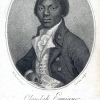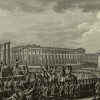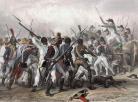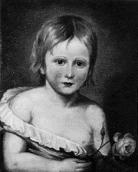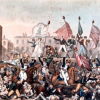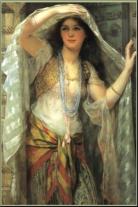Age of Romanticism - Collaborative Timeline - Fall 2021
Created by Amy Gates on Tue, 09/14/2021 - 00:24
Part of Group:
 This timeline is part of the ENG 272 collaborative "Age of Romanticism" Timeline, one element of the Image, Event, Place Project. Add one timeline element that is related or relevant in some way to the work we have been reading in the first several weeks of class. Provide sufficient detail to explain the historical or cultural detail and, perhaps, how it relates to one or more literary works we have read. Be sure to cite your source(s) using MLA bibliographic conventions. A few timeline elements, borrowed from BRANCH, have already been added.
This timeline is part of the ENG 272 collaborative "Age of Romanticism" Timeline, one element of the Image, Event, Place Project. Add one timeline element that is related or relevant in some way to the work we have been reading in the first several weeks of class. Provide sufficient detail to explain the historical or cultural detail and, perhaps, how it relates to one or more literary works we have read. Be sure to cite your source(s) using MLA bibliographic conventions. A few timeline elements, borrowed from BRANCH, have already been added.
This assignment is modeled on assignments created by Professor Dino Franco Felluga (Purdue University).
Timeline
Chronological table
| Date | Event | Created by | Associated Places | |
|---|---|---|---|---|
| Jan 1789 |
Interesting Narrative of the Life of Olaudah Equiano
Articles |
David Rettenmaier | ||
| 5 May 1789 to 10 Nov 1799 |
French Revolution
On 5 May 1789, the Estates-General, representing the nobility, the clergy, and the common people, held a meeting at the request of the King to address France’s financial difficulties. At this meeting, the Third Estate (the commoners) protested the merely symbolic double representation that they had been granted by the King. This protest resulted in a fracture among the three estates and precipitated the French Revolution. On 17 June, members of the Third Estate designated themselves the National Assembly and claimed to represent the people of the nation, thus preparing the way for the foundation of the republic. Several pivotal events followed in quick succession: the storming of the Bastille (14 July), the approval of the Declaration of the Rights of Man and of the Citizen (26 August), and the march on Versailles that led to the enforced relocation of the royal family to Paris (5-6 October). These revolutionary acts fired the imagination of many regarding the political future of France, and, indeed, all of Europe. The republican period of the revolution continued in various phases until 9-10 November 1799 when Napoleon Bonaparte supplanted the government. ArticlesDiane Piccitto, "On 1793 and the Aftermath of the French Revolution" |
David Rettenmaier | ||
| The start of the month Autumn 1789 to The start of the month Autumn 1789 |
October Days in the French RevolutionFrench women began rioting over shortages of bread and the resulting prices for bread that vendors would ask for, on the fifth and sixth of October (Dorn). The riot began in the marketplaces of Paris, specifically in the neighborhood, Faubourg Saint-Antoine (Dorn). But it didn't start completely without political dissidents and renegade national guardsmen (Dorn). These people were going to take advantage of the next large commotion, they pushed the rioters to move to the Palace of Versailles (Dorn). The women marched all the way to the palace and found one of the front gates opened and rushed in to threaten the royal family's lives (Dorn). They decapitated two guardsmen and put their heads on pikes and carted them around the palace (Dorn). It was only till the Marquis de Lafayette pushed the king to give a speach, did the rioters calm (Dorn). Dorn, Nathan. “October Days of 1789 – Pic of the Week.” October Days of 1789 – Pic of the Week | In Custodia Legis: Law Librarians of Congress, 5 Oct. 2012, https://blogs.loc.gov/law/2012/10/october-days-of-1789-pic-of-the-week/. |
Jenalee Robbins | ||
| 1 Jan 1792 |
Vindication of the Rights of Woman
ArticlesAnne K. Mellor, "On the Publication of A Vindication of the Rights of Woman" Related Articles |
David Rettenmaier | ||
| 21 Jan 1793 |
Execution of King Louis XVI
1793 was a key juncture in the revolution, beginning with this execution on 21 January. The increasing violence prompted Britain to cut its ties to France, leading to declarations of war by the two countries. Violence peaked during the Reign of Terror (5 September 1793 – 27 July 1794), which resulted in the execution of the Queen (16 October) as well as of many suspects of treason and members of the Girondins, the more moderate faction that the radical Jacobins brought down on 2 June 1793 ArticlesDiane Piccitto, "On 1793 and the Aftermath of the French Revolution" |
David Rettenmaier | ||
| 5 Sep 1793 to 27 Jul 1794 |
Reign of Terror
On 5 September 1793, the National Convention, France’s ruling body from 1793 to 1795, officially put into effect terror measures in order to subdue opposition to and punish insufficient support for the revolution and the new regime. From the autumn of 1793 until the summer of 1794, thousands of people across the country were imprisoned and executed (including the Queen) under the ruthless leadership of Maximilien Robespierre. The guillotine, particularly the one in Paris’s Place de la Révolution, served as the bloody emblem of the fear tactics that began to manifest themselves first in the formation of the Committee of Public Safety (6 April 1793) and subsequently in the implementation of the Law of Suspects (17 September 1793). The Terror ended on 27 July 1794 with the overthrow of Robespierre, who was guillotined the next day. ArticlesDiane Piccitto, "On 1793 and the Aftermath of the French Revolution" |
David Rettenmaier | ||
| 21 Jul 1796 |
How Robert Burns died and his legacy examinedRobert Burns was a remarkable poet. Here is the story of his demise according to The Scotsman.Burns’ legacy lives strong - and not just here in Scotland. Every 25th of January - the Bard’s birthday - an increasing number of people both home and abroad take part in the celebrated Burns Supper, to enjoy haggis, whisky, and recitals of his work. Centred around universal themes of nature and romance, his lyrics offer a timeless appeal which continue to resonate the world over. His poem ‘Auld Land Syne’, which is famously sung around the globe on New Year’s Eve, is recognised by the Guinness Book of World Records as the third most popular song in the English language behind ‘Happy Birthday’ and ‘For he’s a jolly good fellow’. We’ve erected countless statues in his honour - Excluding religious figures Burns has more statues around the world than any figure living or dead save for Christopher Columbus and Queen Victoria. And icons past and present from Michael Jackson and Abraham Lincoln to John Steinbeck and Bob Dylan have cited him as a huge influence. Dylan, in particular, described Burns in 2008 as his greatest inspiration. The national coffers benefit too, with Burns contributing over £100 million to the Scottish economy every year. Scotland owes the Bard a huge debt, but the great irony is that Robert Burns died owing money - £14 to be precise. And despite his fame, we still don’t appear to agree on exactly what caused his death. The popular theory goes that Burns died from rheumatism having been found by the roadside in the freezing, pouring rain after a heavy drinking session. Burns’ reputation as a hard drinker would be hard to contest but the truth is that the poet had been seriously ill and for a long time. He passed away at the age of just 37 on 21 July 1796, but had been suffering for at least five years before that. In his 2008 book, ‘Robert Burns the Patriot Bard’, Patrick Scott Hogg claims that during the autumn of 1791 things were so desperate that Burns’ doctor came to visit him 5 times in one week. Robert was complaining of painful joints and fever - the early signals of rheumatism. Within a few years Burns could barely get around without assistance. He was essentially an invalid, and while it’s true that he was no stranger to a glass of port, by 1796 trips to the local pub would have been out of the question. According to Stewart Cameron of the Halifax Burns Club, the link with alcohol should be ruled out once and for all: “Numerous authors have dutifully attributed Burns’ death to the effects of alcohol. “Burns had certainly made himself unpopular for some of his libertine behaviour and revolutionary political views and there was likely no shortage of people willing to propagate the idea that he was ruined by drink. “It is clear that Burns liked alcohol and was inebriated on numerous occasions. However, it is false to suggest that his drinking contributed to his demise. The symptoms strongly suggest he had terminal heart failure from bacterial endocarditis, as a complication of rheumatic fever.”
Newsroom, The. "How Robert Burns Died and HIs Legacy Examined” The Scotsman, The Newsroom, 23 Jan. 2017, https://www.scotsman.com/whats-on/arts-and-entertainment/how-robert-burn.... |
Shawna Ackerson | ||
| 1 Jan 1804 |
Haitian IndependenceOn January 1st, 1804, Jean-Jacques Dessalines declared independence from France, making Haiti the first sovereign nation in Latin America. This announcement came after the expulsion of the French army from Haiti after Napoleon Bonaparte announced his intentions to conquer Haiti from the black leaders and restore slavery. The first state to recognize Haiti's sovereignty was France, after demanding tribute from the Haitian government under threat of invasion. The first non-coerced recognition came from the British in 1833, and later the United States in 1862. |
Jacob Ray | ||
| 5 Apr 1815 |
Eruption of Tambora
This geological event led to the “Year Without a Summer,” the worldwide effect of atmospheric debris and aerosols on climate and crops, especially severe in Eastern North America, Western Europe, and China. In fact, the "Year Without a Summer" belongs to a three-year period of severe climate deterioration of global scope caused by the eruption. With plummeting temperatures, and disruption to major weather systems, human communities across the globe faced crop failures, epidemic disease, and civil unrest on a catastrophic scale. Articles |
David Rettenmaier | ||
| The end of the month Winter 1816 to The start of the month Summer 1819 |
The Tragic loss of William ShelleyThe Death of William Shelley was at around the same time as the creation of "Frankenstein". This harsh moment in Mary Shelley's life is seen in the way that she writes Frankenstein; she write as if she was in deep pain. The way she makes Victor loose most of his family to the creature, can be compared to the way in which Shelley loses the lives of her family. During this time resurrectionist were on the prowl for fresh bodies so they could rake in tons of cash. This worry must have been weighing on her mind following the death of her own child. This makes her connection to Frankenstein a bit more emotional and thought provoking than thought before. Percy and Mary were distraught at the death of William, who was the third child they had lost. Mary approached a nervous breakdown. She even modeled the name of Victors youngest brother as William. In the novel the creature strangled Willaim Frankenstein, but in real life William Shelley's son died from an illness |
Preston Ford | ||
| 1 Jul 1816 |
Byron, "Darkness"In July 1816, Lord Byron writes his poem, “Darkness,” a vision of chaotic disorder and universal extinction consequent upon the disappearance of the sun. Image: Thomas Philipps, Portrait of Lord Byron (1824). This image is in the public domain in the United States because its copyright has expired. Articles |
David Rettenmaier | ||
| 16 Aug 1819 |
Peterloo massacre
Related ArticlesJames Chandler, “On Peterloo, 16 August 1819″ Sean Grass, “On the Death of the Duke of Wellington, 14 September 1852″ |
David Rettenmaier | ||
| circa. 1830 |
Steady Decline of Ottoman EmpireThe Ottoman Empire, or modern day Turkey, was during the Medieval period, a global superpower. With it's central location and vast reach of land the Ottoman empire quickly became a center of economy and religious diversity. Their decline however, began in the 1600's culminating in the battle of Vienna in 1683 where the Ottoman Turks suffered a huge loss. Over the next hundred years the empire began loosing more and more land, the loss of Greece being the greatest around 1830 after a revolt for independence. The Ottoman Empire dissolved around the time of the Balkan Wars and permenantly with World War 1. So what does this have to do with the Romantic period? As before mentioned the Ottoman Empire had a central location on the Eurasian continent and the European side bordered with many smaller countries. With the Ottomans seeking to regain control and many citizens learning from revolts of the past, political unrest began to grow especially during the Romantic period. This led to people being taken as politcal prisoners and many more fleeing the country altoghether. Some characters that are famous escaped Ottomans during the Romantic Period are Safie and her Father from "Frankenstein" by Mary Shelley. Safie's father is in politcal danger and they fled to the DeLacey's house near Mont Blanc. Safie married into the family as an act of safety as well as love. Many Ottomans however were not as lucky and some even faced discrimination. |
Elizabeth Reaves | ||
| 23 Apr 1850 |
Death of William Wordsworth
Although Wordsworth had been the Poet Laureate of England since 1843, he was no longer writing new verse. As Samantha Matthews notes, when Wordsworth died, most contemporary newspapers and periodicals made little of the event (35). Yet, the public who had long revered Wordsworth in life turned in grave into a "shrine for actual and imagined pilgrimage" (35). Photo by Amy Gates Bibliography Matthews, Samantha. "Wordsworth's Mortal Remains." The Wordsworth Circle, vol. 34, no. 1, 2003, pp. 35-39, doi:10.1086/TWC24044918. |
Amy Gates | ||
| circa. The middle of the month Summer 1851 |
Dover BeachDover Beach is where the poem "Dover Beach" was written by Matthew Arnold. He was on the beach with his wife when he wrote this poem. The two were on their honeymoon. The poem itself is about how Christianity is unable to rise above the tide of scientific discovery. He is worried for the future of Christianity. This poem also brushes on the mindset of "nature's beauty is a distraction from the misery of being alive." when he describes the cliffs in the first paragraph it seems like a beautiful scene which is ended when a "eternal note of sadness" is brought in reminding the writer of his original emotion of sadness.
|
Tayler Lancaster | ||
| 24 Nov 1859 |
Publication of Darwin's "On the Origin of Species"Charles Darwin published his book On the Origin of Species on November 24, 1859, which was 23 years after he returned from his voayage to the Galápagos Islands. Darwin knew that his theory would be found controversial at the time, which is why he was hesitant to publish. At the time, scientists believed that species were fixed, which is the direct opposite of what Darwin's research suggested. Darwin was also afraid of the probable religious backlash that he would receive, fearing being declared a "heratic" with "blasphemous" ideas. Darwin received a letter from an English naturalist Alfred Wallace in 1858 where Wallace gave a summary on his theory, On the Tendency of Varieties to Depart Indefinitely from the Original Type. Darwin was surprised at the fact that Wallace wrote out what was essentially Darwin's theory. After the two met, Wallace encouraged Darwin to publish his findings with Wallace's as support because Darwin had signifigantly more research in favor of his theory. A little over a year later, Darwin published his theory. Only 1,250 copies of On the Origin of Species were printed, in anticipation of the public uproar that Darwin suspected would occur due to his theory. All the copies sold out in one day. Though many people, including some of Darwin's family and friends, were angry with his findings, many found Darwin's theory fascinating and agreed with him due to the amount of evidence he compiled. Darwin went on to publish many more books throughout the 1870s. Sources: |
Deidre Brown | ||
| The end of the month Summer 1888 |
jack the ripperwe were talking about the women being protected today in class women were the victims of all of the jack the ripper cases. so when we were talking aout patmores views on women and how he basically says leave all of the dirty work up to the men i.e providing, fighting, protecting. women should just be pretty and steer clear thats basically what hes saying by his view on a womens place in society. now with that being said women were being driven out of the only place they known to be home for being pregnant out of wedlock, women are forced on to the street and basically have to survive on their own so theyll do whatever to survive prostitution, being escorts, being belittled by a man just to have a place to stay all of these things. now think about this all of jack the rippers victims were prostitues and people who he felt like werent worth looking for. and when these families of these women and mothers kicked them out they threw the women to the streets and thats where jack the ripper caught and killed most of his victims in back alley ways and dark allies who would be there other then homeless people and prostitutes. |
kahari Love |

